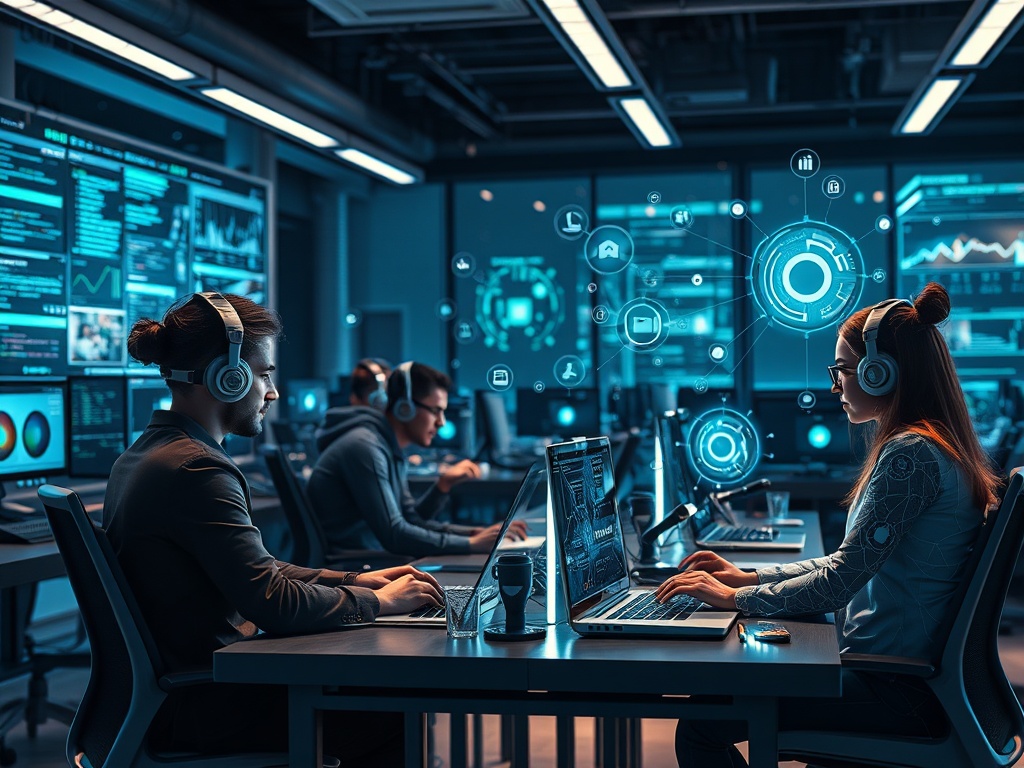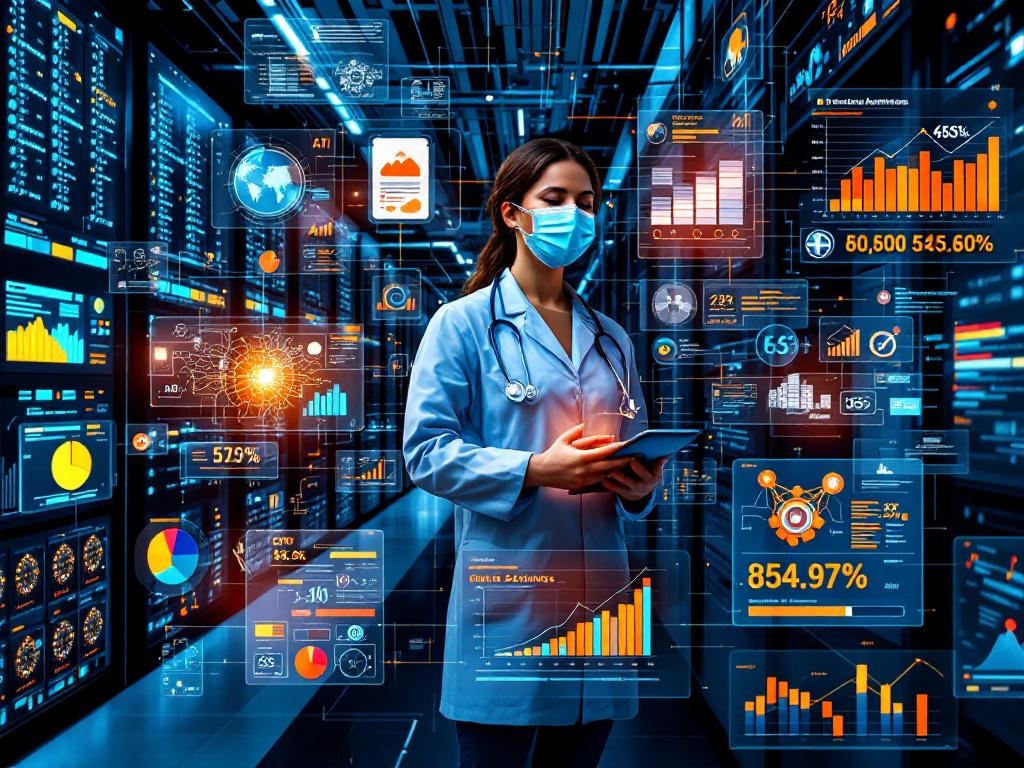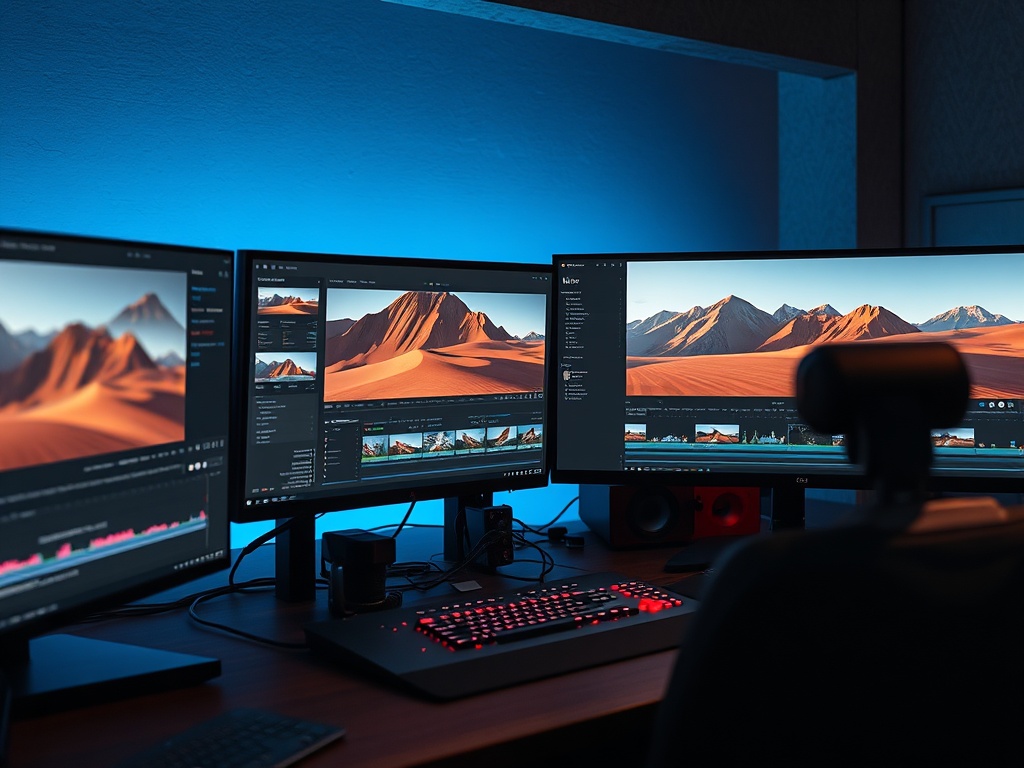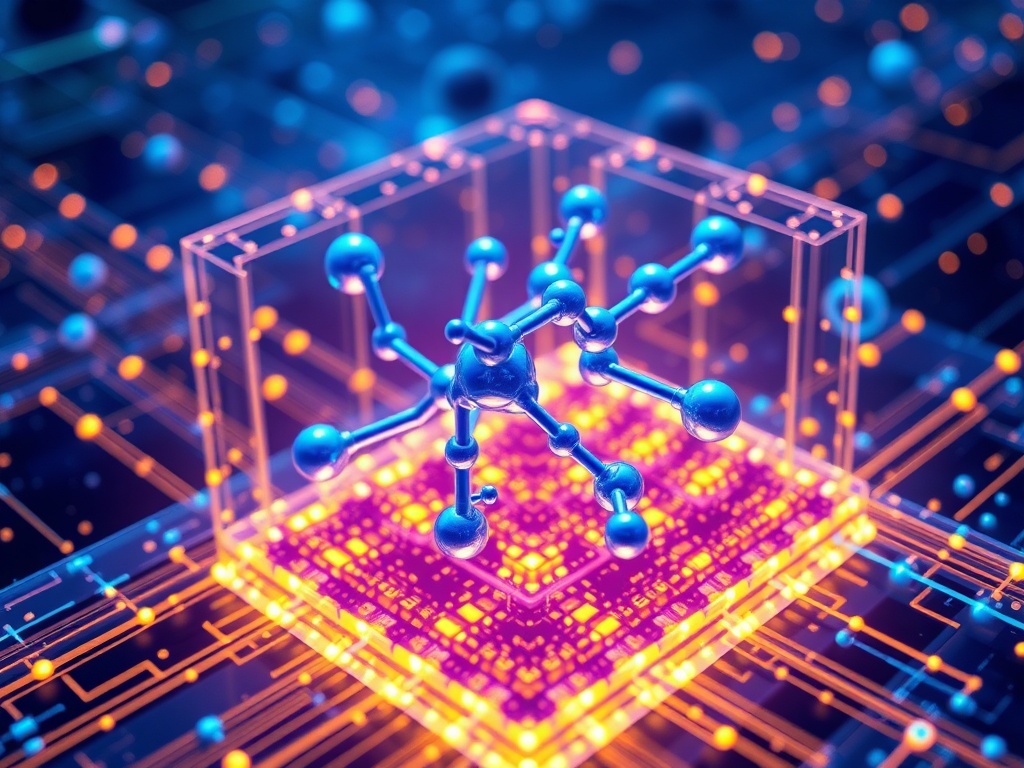Embracing AI as a Collaborative Force in the Software Development Lifecycle

Artificial Intelligence (AI) is transcending its traditional role as a helper to become an integral Co-Creator in the software development lifecycle (SDLC). This article dives into how AI is reshaping team dynamics by actively participating in coding, testing, and deployment, enhancing efficiency, and fostering innovation.
Navigating the Transition from AI Co-Pilot to Co-Creator in SDLC
The progression from regarding Artificial Intelligence (AI) as merely a Co-Pilot in the Software Development Lifecycle (SDLC) to embracing it as a Co-Creator marks a pivotal shift within modern development teams. This transformation is not just a change in terminology but a fundamental evolution in how AI integrates and actively participates in every phase of the SDLC—from drafting requirements to code deployment. In the realm of coding, this evolution is most evident in the practice of pair programming with AI, which has significantly elevated development processes by intertwining human intellect with algorithmic precision.
Pair programming, a methodology where two programmers work together at one workstation, has been a staple in agile development for its benefits in enhancing code quality and facilitating knowledge transfer. The integration of AI into this practice—AI Pair Programming—transforms it further by combining the creative problem-solving abilities of human developers with the computational efficiency of AI. AI tools in this context act as dynamic pair programmers, capable of writing, reviewing, and refining code in real time. This partnership not only boosts productivity but also injects a level of innovation previously unseen, as AI can generate code blocks, suggest optimal algorithms, and autonomously manage more mundane coding tasks.
The AI's role in this evolved pair programming paradigm extends beyond merely suggesting code improvements. It actively participates in the creative process, enabling developers to explore a wider array of solutions and algorithms that might not have been considered. Furthermore, AI’s capacity to handle routine coding tasks liberates developers to focus their efforts on more complex, value-added aspects of the software development process. This shift fundamentally changes the developer’s role from a coder executing tasks to a designer orchestrating complex solutions.
Moreover, the integration of AI into pair programming underlines a significant advancement in software quality. By continuously analyzing code in real time, AI tools can identify and rectify errors early in the development process. This early intervention is crucial for maintaining high standards of code quality and ensuring that the final product is robust and reliable. The AI’s relentless attention to detail and its ability to learn from past interactions make it an invaluable partner in striving for code perfection. The emergence of generative AI and conversational interfaces further enhances this collaboration, allowing developers to engage with AI tools in more intuitive and productive ways.
This advancement necessitates a reevaluation of current team structures and workflows within the SDLC. The conventional delineation of roles begins to blur as AI takes on more active responsibilities, pushing development teams to adopt more flexible and adaptive models. These models prioritize fluid collaboration over rigid hierarchy, encouraging a culture of continuous learning and mutual improvement between human and AI team members. To optimize the benefits of AI-driven pair programming, it is imperative for teams to establish clear communication norms, governance structures, and knowledge-sharing practices that bolster effective human-AI collaboration while managing the risks associated with increased AI autonomy.
The transition from AI as a Co-Pilot to a Co-Creator in the context of pair programming exemplifies the broader evolution taking place across the SDLC. This shift, heralding a new era of software development, redefines what is possible when human ingenuity is complemented by artificial intelligence. As AI continues to embed itself more deeply into every aspect of software development, the industry stands on the brink of a revolutionary leap forward in productivity, creativity, and quality—an era where AI is not just a tool, but an integral partner in the creation process.
Pair Programming with AI Elevating Development Processes
Embracing AI as a collaborative partner in the software development lifecycle has led to a transformative concept in modern programming: Pair Programming with AI. In this advanced setting, AI tools elevate coding practices by engaging dynamically alongside human developers, effectively merging artificial intelligence with traditional coding expertise. This AI-human partnership boosts both productivity and creativity, fundamentally enhancing the software development process.
At the heart of this evolution is the AI's capability to act not just as an observer but as a proactive co-creator. AI's involvement ranges from generating code blocks to suggesting optimal algorithms and autonomously managing routine tasks that often consume considerable human effort and time. This integration allows developers to concentrate on more complex, creative aspects of coding while relying on AI for efficiency in codewriting and problem-solving.
The impact of AI in pair programming extends beyond simple task assistance. It introduces a new paradigm in coding practices where AI agents understand contextual cues and project requirements, thereby offering solutions that might not have been immediately apparent to human developers. This capability not only accelerates the development process but also significantly improves code quality by incorporating AI-driven insights and checks early in the coding phase.
Furthermore, this collaboration directly influences the role of developers, shifting their focus towards more strategic and innovative tasks. Developers are now tasked with guiding AI to ensure that the generated code aligns with the overall project objectives and maintains a high standard. This shift has necessitated a redefinition of developer roles, emphasizing oversight, innovation, and strategic thinking over routine coding tasks.
Moreover, the advent of AI in coding practices enriches the software quality by introducing sophisticated algorithms and techniques that might not be part of a developer's immediate skill set. By leveraging AI's vast database of coding patterns and its ability to quickly analyze and suggest optimizations, projects can achieve improved performance, scalability, and security, aligning with best practices and cutting-edge technologies.
The collaborative environment fostered by AI and human developers also catalyzes a shared knowledge base where both entities learn from each other. AI tools, armed with machine learning capabilities, adapt and refine their suggestions based on continuous feedback from developer interactions. Similarly, developers expand their technical acumen by engaging with AI-generated code and algorithms, often crossing the bridge into new programming languages and paradigms facilitated by AI insights.
Effective implementation of AI as a co-creator in software development hinges on seamless communication and clear role demarcation within the team. Establishing a robust framework that integrates AI tools within the development pipeline, ensuring they complement rather than complicate the development process, is crucial. Moreover, fostering an environment where human developers are comfortable and skilled in interacting with AI tools is vital for maximizing the potential of this partnership.
In summary, Pair Programming with AI not only revolutionizes how code is written but also elevates the entire development process through enhanced collaboration, creativity, and efficiency. This shift towards AI-embedded SDLC roles marks a significant milestone in the journey of software development, setting the stage for an even deeper integration of AI in quality assurance, DevOps, and beyond, as will be explored in the following chapters.
The Increasingly Multifaceted Role of AI in Quality Assurance and DevOps
As the software development lifecycle (SDLC) evolves, Artificial Intelligence (AI) is expanding its roles beyond the traditional coding assistance, taking on crucial responsibilities in Quality Assurance (QA), DevOps, product management, and security scanning. This paradigm shift is transforming AI from a supportive tool into an indispensable collaborator across various facets of software development. AI agents, embedded deeply within these roles, autonomously manage and improve processes, embodying the transition towards AI-integrated development teams where AI is no longer merely a participant but a co-creator within the SDLC.
In the realm of quality assurance, AI's capabilities extend to automatic debugging and continuous updates to documentation. Through machine learning algorithms, AI can identify patterns in code to predict and rectify potential errors before they escalate into more significant issues. This proactive approach to debugging not only enhances product quality but also streamlines the development process by reducing the time humans spend on troubleshooting. Furthermore, the autonomous update of documentation by AI ensures that all team members work with the latest information, fostering consistency across the development cycle.
Within DevOps, AI's role cannot be overstated. AI agents manage deployment environments, oversee continuous integration and delivery pipelines, and ensure that software releases meet the highest standards of quality and reliability. These AI-embedded software roles automate and optimize operations, allowing DevOps teams to focus on strategic tasks and innovation. By applying predictive analytics, AI can anticipate potential deployment issues, suggest optimizations, and even automate the scaling of infrastructure based on predicted demand, thus ensuring that software performance is maintained at its peak.
Additionally, the incorporation of AI in product management introduces a new level of efficiency and insight. AI tools can analyze vast amounts of user feedback and market data to inform product development strategies, priority setting, and feature enhancements. This results in products that are not only technically robust but also closely aligned with user needs and market demands.
The expansion of AI's role is equally transformative in security scanning. Through sophisticated algorithms capable of identifying vulnerabilities and potential security threats, AI enhances software security from the earliest phases of the SDLC. This preemptive identification and mitigation of risks contribute significantly to the development of secure, trustworthy software solutions.
Effective integration of AI into these roles necessitates clear definition and governance structures to ensure AI's capabilities are fully leveraged while mitigating potential risks. This involves establishing new communication norms and knowledge-sharing practices to foster efficient human-AI collaboration. By doing so, development teams can create a synergistic environment where AI's autonomous capabilities complement human creativity and strategic thinking, driving the SDLC towards unprecedented levels of efficiency and innovation.
As we move towards utilizing AI for shift-left testing and continuous quality improvement, the significance of AI's multifaceted role in the earlier stages of the SDLC becomes increasingly apparent. By embedding AI across quality assurance, DevOps, and beyond, software development teams are not only enhancing their operational efficiency but are also setting new standards for software quality and reliability. The future of software development is here, marked by a collaborative partnership between humans and AI, where each leverages their strengths to achieve common goals.
Utilizing AI for Shift-Left Testing and Continuous Quality Improvement
In the swiftly evolving landscape of software development, the adoption of AI as a Co-Creator marks a pivotal transformation, particularly evident in the approach to testing and quality assurance. The principle of 'shift-left' testing, backed by AI-powered tools, signifies a proactive stance on quality and security, embedding these crucial factors early in the Software Development Lifecycle (SDLC). This strategic shift enables teams to identify and address defects and vulnerabilities at the nascent stages, thereby enhancing the resilience and reliability of software products.
Traditionally, testing and quality assurance often occurred towards the latter phases of development, acting as a final checkpoint before deployment. However, this late-stage detection of issues could lead to significant delays and increased costs due to the complexities of rectifying embedded faults in the code. The integration of AI within development teams has revolutionized this process. AI-embedded systems in the SDLC facilitate continuous quality improvement through automated, sophisticated analysis methods such as static and dynamic code analysis, along with security scanning. This approach ensures that potential problems are flagged and can be addressed promptly, well before the code reaches advanced development stages.
Static code analysis, powered by AI, scrutinizes code in its non-runtime environment, enabling developers to catch syntactical errors, inconsistent coding practices, and even security vulnerabilities without having to execute the program. Dynamic code analysis, on the other hand, assesses the code during execution, identifying issues that arise from the program's interaction with external systems or unpredictable data inputs. By employing AI-driven tools for both static and dynamic analysis, development teams can achieve a comprehensive understanding of the code’s behavior and quality from the outset. This not only streamlines the development process but also significantly reduces the time and resources spent on debugging and remediation.
Security scanning, augmented by AI, plays a crucial role in this 'shift-left' approach. With cyber threats constantly evolving, AI systems are trained on the latest security vulnerabilities to identify potential breaches in the codebase effectively. This proactive security stance ensures that software products are not only functionally robust but also secure from potential cyber threats, fostering trust and reliability among end-users.
The integration of AI into these testing roles has facilitated a seamless, continuous cycle of quality assurance and security assessment. This is in stark contrast to the episodic and often reactive traditional methods. AI’s capacity to learn and adapt over time means that with each iteration of the SDLC, the quality and security analyses performed by these AI systems become more refined and effective. Consequently, human developers are afforded more freedom to concentrate on innovation and complex problem-solving, confident in the knowledge that the foundational aspects of code quality and security are being managed efficiently by their AI counterparts.
This paradigm shift towards AI-driven 'shift-left' testing and continuous quality improvement requires a rethinking of team dynamics and development practices. It necessitates a culture that embraces AI as an integral team member, engaging in continuous communication and feedback loops between human developers and AI systems. Such collaboration ensures that AI's insights are effectively leveraged to enhance both the quality and security of software products from the earliest stages of development.
By embedding AI across the SDLC, development teams are not only able to anticipate and mitigate potential issues more effectively but are also setting new standards for software quality and security. This approach, anchored in the principles of continuous improvement and proactive problem-solving, underscores the transformative impact of AI as a Co-Creator in modern development teams, laying the groundwork for the next chapter of innovation in software development.
Human-AI Teaming Strategies for Enhanced Collaboration and Innovation
As we move further into the realm where AI becomes a co-creator rather than just a facilitator in the software development lifecycle (SDLC), defining AI roles within teams and establishing an effective human-AI collaboration framework becomes paramount. The integration of AI across different phases of SDLC opens up avenues for enhanced productivity and innovation. However, it necessitates a paradigm shift in communication norms, governance structures, and knowledge-sharing practices to ensure AI team members are integrated successfully, their full potential is harnessed, and risks are mitigated.
Effective human-AI teaming requires clear delineation of roles where both AI systems and human developers understand their responsibilities and how they complement each other. For instance, while AI can autonomously generate code, run tests, or even identify potential bugs during development, the creative direction, final decision-making, and complex problem-solving are areas where human insight remains invaluable. Establishing a framework that facilitates seamless interaction between human developers and AI systems is critical. This involves setting up processes and guidelines that dictate how and when AI suggestions should be considered, ensuring that the AI's role as a co-creator is both respected and optimized.
Communication norms in a human-AI collaborated environment differ significantly from traditional human-to-human interactions. Here, developers might use conversational interfaces to interact with AI, making requests or queries in natural language. Hence, developing a communication protocol that enables clear, efficient, and effective exchange between AI systems and human developers is essential. Such protocols not only streamline workflow but also bolster trust in AI's capabilities, ensuring that AI-generated suggestions or actions are rightly understood and appropriately utilized.
In addition, governance structures play a vital role in the integration of AI within development teams. These structures should outline the scope of AI's decision-making capabilities, addressing ethical considerations and accountability in cases of errors or when AI actions lead to unintended consequences. Governance frameworks must also cover intellectual property rights, especially concerning code or algorithms generated by AI, and ensure compliance with relevant laws and standards.
Knowledge-sharing practices are equally critical in human-AI collaboration. AI systems can learn from human input, improving over time to provide more accurate and relevant suggestions or actions. Conversely, developers can learn from AI analysis or insights, discovering more efficient algorithms or coding practices. Establishing platforms or tools for continuous knowledge exchange between AI systems and human developers fosters an environment of mutual learning and improvement, ultimately leading to a more productive and innovative development process.
To fully realize the potential of AI as a co-creator in software development, teams must adopt an inclusive approach that recognizes AI's transformative capabilities while also addressing the challenges of integrating non-human intelligence into human-centric workflows. By doing so, teams not only enhance their creative and productive capabilities but also move towards a future where human-AI collaboration is harmonized for maximum innovation and efficiency.
The transition from utilizing AI for shift-left testing and continuous quality improvement to incorporating AI as an active participant across the SDLC exemplifies the evolution towards more resilient and innovative software development practices. As we advance, the focus on human-AI teaming strategies and the requisite communication, governance, and knowledge-sharing frameworks will be crucial in shaping the future of software development. By embedding AI as a co-creator, development teams set a precedent for a collaborative, innovative, and efficient approach to software creation that leverages the best of both worlds.
Conclusions
The integration of AI as a Co-Creator has profoundly changed the SDLC, ushering in new paradigms for team collaboration and software creation. As AI takes an active role alongside developers, companies must adapt to harness these innovative forces effectively, ensuring the continuous evolution and quality of their software products.



